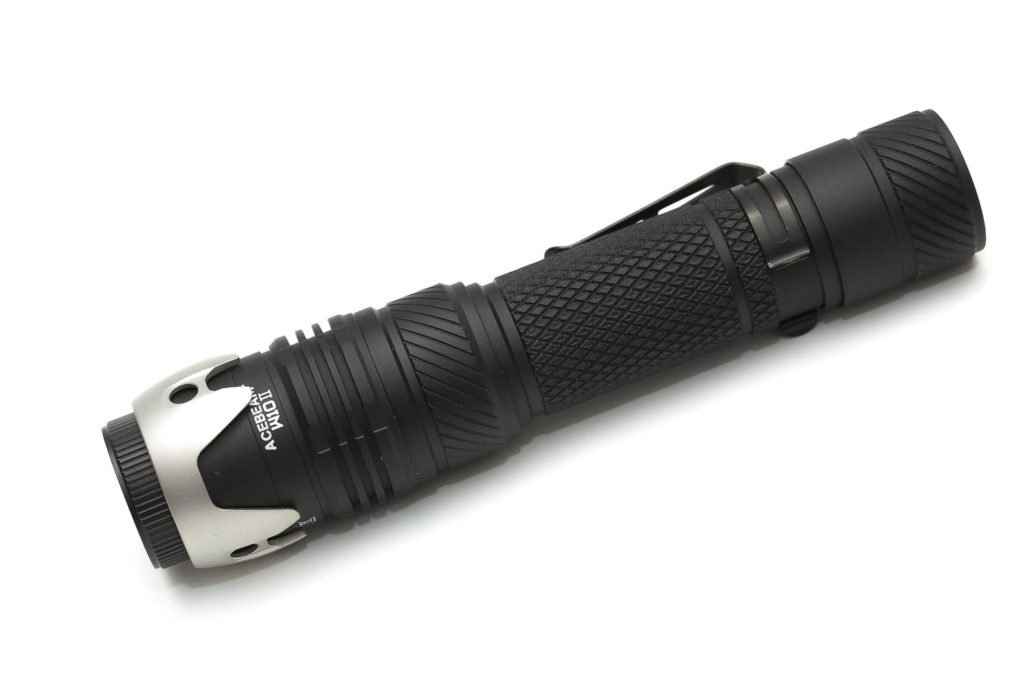Acebeam W10 gen 2 review
Acebeam W10 gen2 specifications
| Brand / Model | Acebeam W10 gen2 |
|---|---|
| LEP | LEP flashlight |
| Lumens | 450 lm |
| Beam intensity | 370,000 cd |
| Battery config. | 1*21700 |
| Material | Aluminum |
| Modes | 1 |
| Blinkies | N/A |
| Reflector | N/A |
| Waterproof | IP68 |
| Review date | August 2020 |
Introduction:
Acebeam is becoming more and more a mainstream flashlight manufacturer. Their lineup of flashlights is very impressive and the brand is well known throughout the world. They produce one of the brightest and farthest throwing LED flashlights in the world. But the W10 gen 2 is not an LED flashlight, it’s an LEP (Laser Excited Phosphor) that contains a laser, that transfers its blue laser beam into white light.
It’s available in 3 different versions, namely a CRI90, 4000K, and 6500K. This review is about the 6500K version, a cool white flashlight.
What you’ll get:
Acebeam’s packaging is always good, if not excellent. The box has a magnetic lip that falls into place when you close it. Inside the box are a few nice accessories:
- The flashlight: Acebeam W10 gen2
- Acebeam 21700 type battery with 5100mAh capacity (IMR21700NP-510A)
- Red filter
- Green filter
- Attack bezel
- USB-C cable
- Pocket clip (attached)
- 3 spare o-rings
- 18650 battery adapter
- Spare rubber switch boot
- Warranty card
- Laser warning
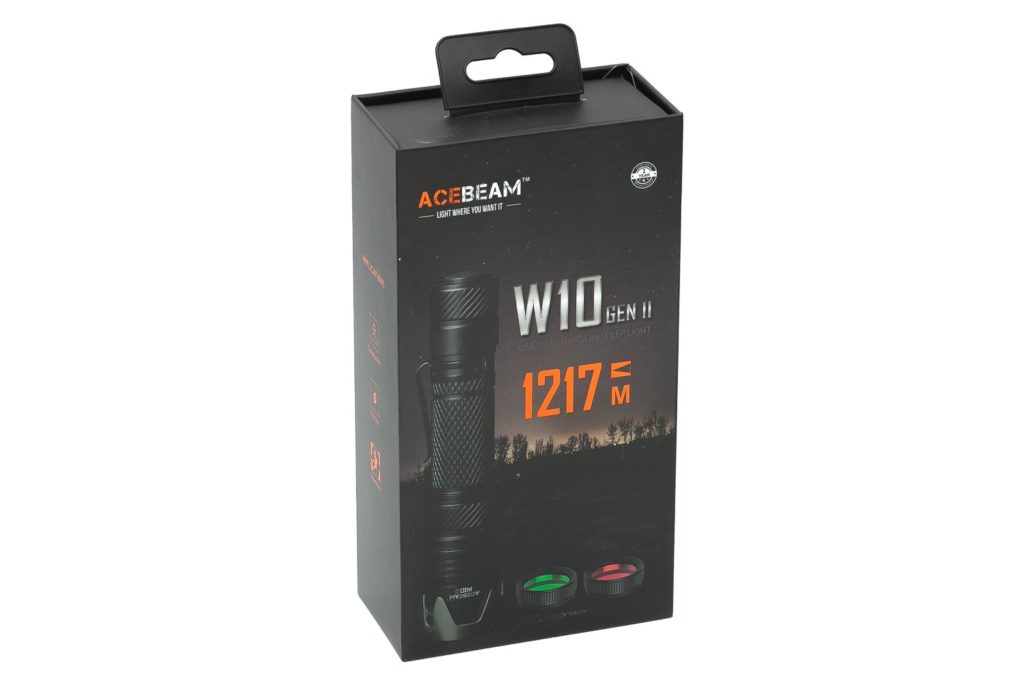
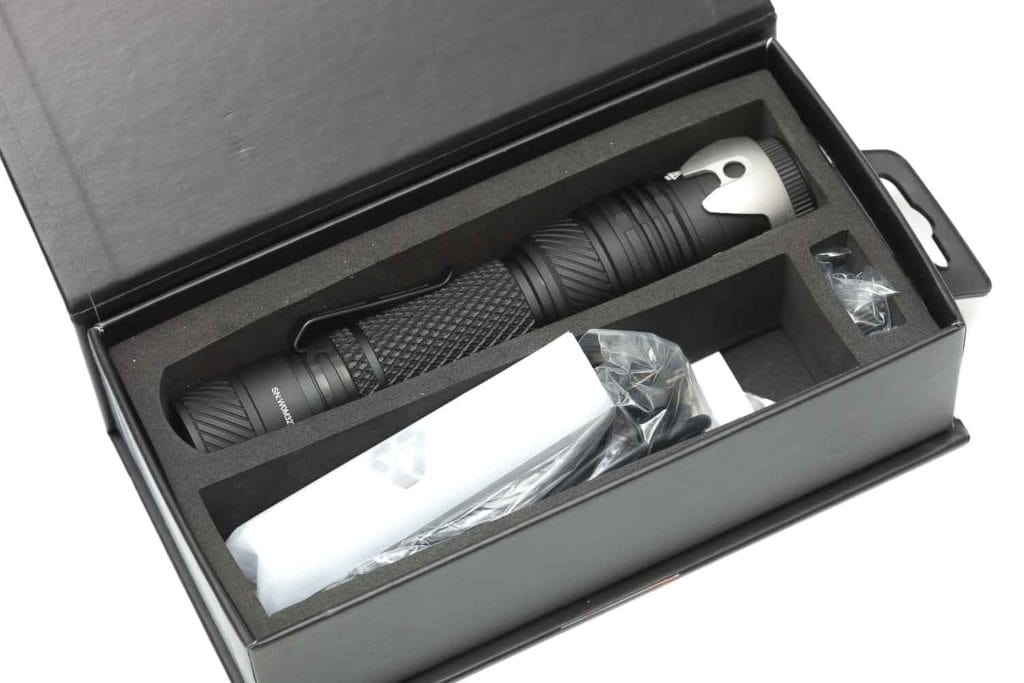
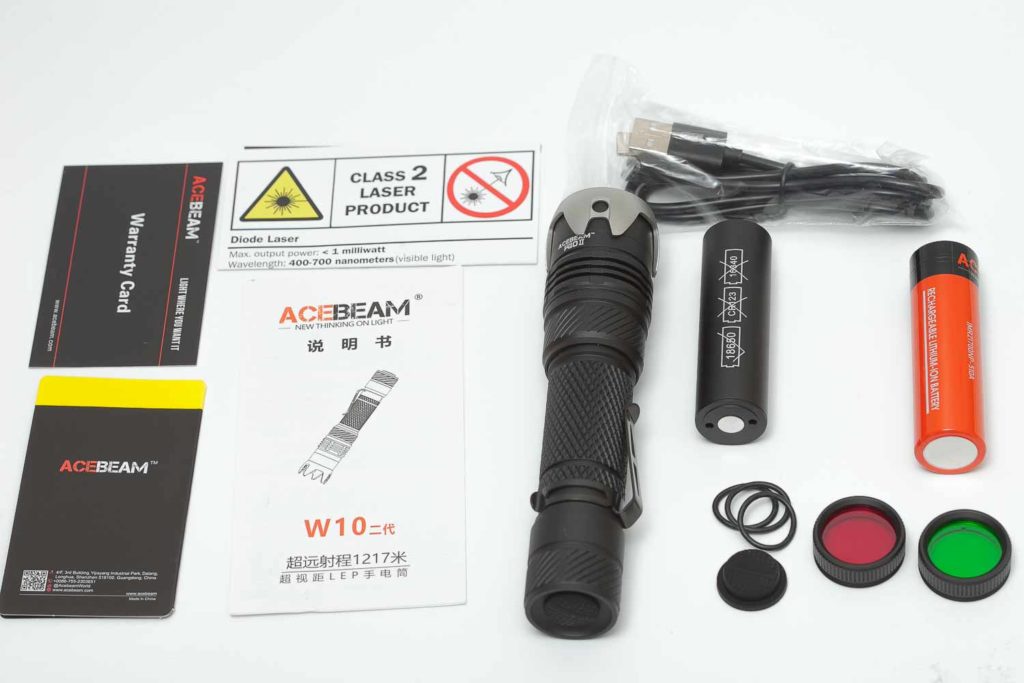
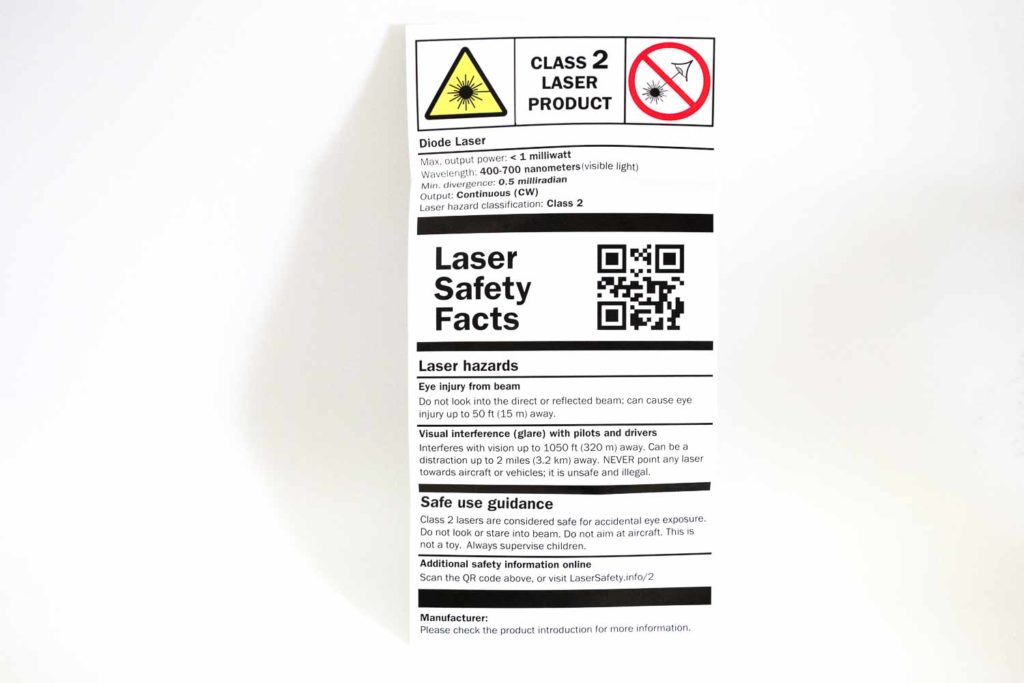
Handling of the light
The W10 gen2 is one of the shortest LEP flashlights out there. It’s short and looks exactly like your average tactical flashlight including the attack bezel. Although I’m not fond of this type of bezel, it does, however, protect the lens from damage.
The switch is located in the tailcap, and is used to turn the light on and off. Click for on, and another click for off. At first, you’d expect the switch to be a mechanical forward clicky, but it’s not. The manual mentions a Momentary-on functionality, but that is not possible with mine. I wonder if they changed the production for this one. Edit: yes, the did. There used to be a mechanical clicky when they started producing the second generation W10. But then changed to an electronic type switch. I’m not 100% sure how to describe the switch, because it’s probably not a real e-switch.
Anyway, it does click, but not like your regular flashlight. Not like the Acebeam W30 we reviewed earlier, nor like any other LEP flashlight, we discussed.
Unfortunately, Acebeam didn’t include a holster or a lanyard, so the only way to carry it is by putting it in your pocket or use the included pocket clip. Of course, you can always use your own favorite holster if you’d like.
Since the switch is recessed within the tailcap, you can even put the flashlight on the tailcap, and let it tail-stand.
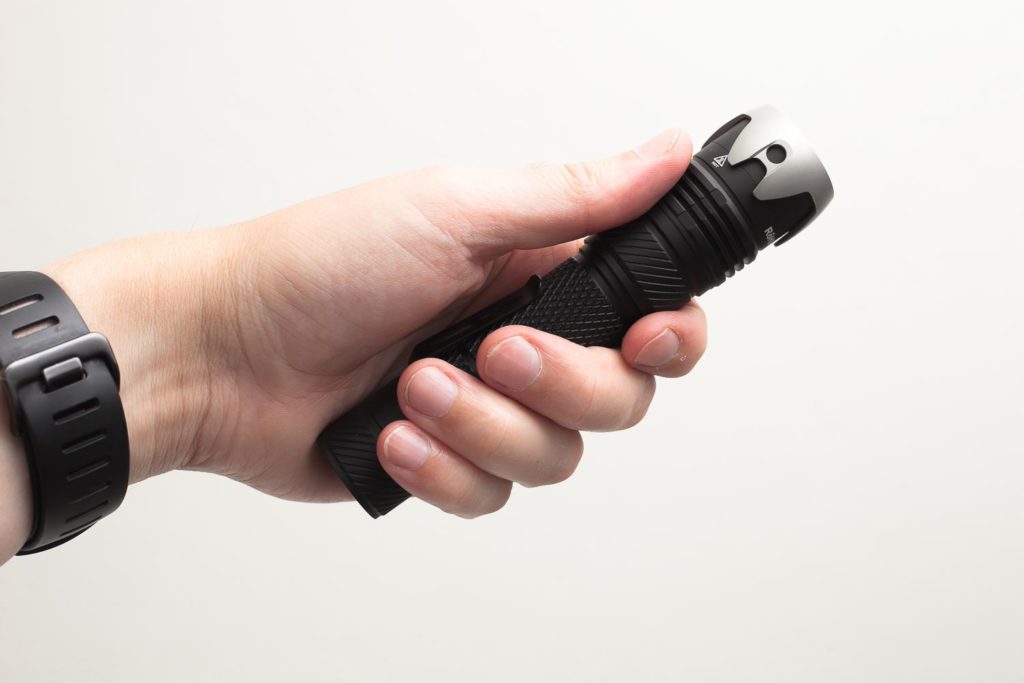
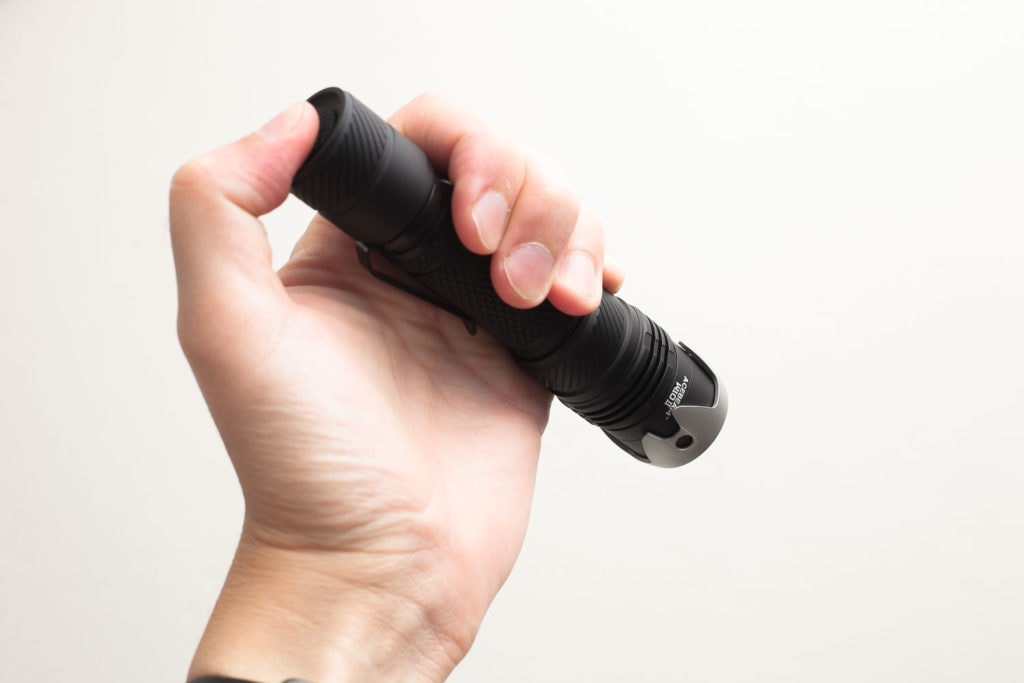
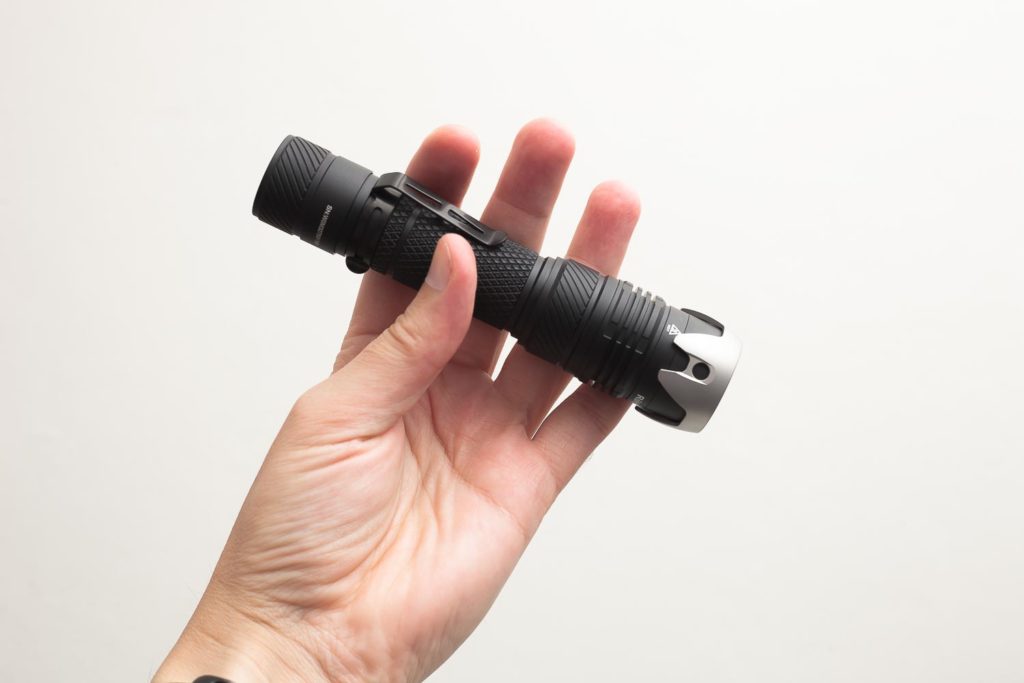
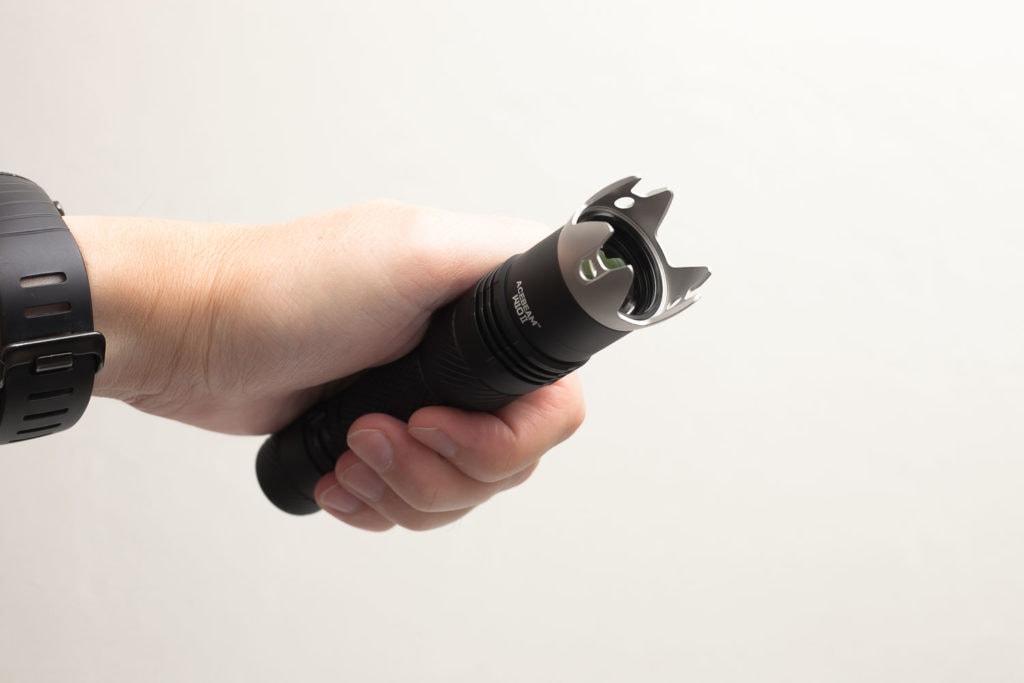
Build Quality, knurling, threads, and anodization
There is knurling on the tailcap and battery tube. Both look really good, but the one on the tailcap is the same pattern (redding) like the part between the battery tube and the head of the flashlight. The redding near the flashlight head is actually a cover for the USB-C charge port. You don’t really know you can unscrew that part since there are no icons or signs that would indicate that.
The cover is held into place by 1 O-ring at the top, and I assume there would be one at the beneath the ring as well.
Knurling, threads, and anodization look pretty good. Anodization has a matte finish, which I personally like a lot, so there is nothing really to complain about the build quality. The threads and o-rings are lubricated as you would expect. Since I broke a pocket clip on 1 of my flashlights by testing its strength, I tend to stay away from ‘seeing how far I can bend it’. Because realistically speaking, in real life you also wouldn’t ‘bend it till the end’.
I’m not a big fan of attack-bezels, like this one, but it does protect the glass front lens. It’s also meant to protect the 2 colored filters you can attach to the flashlight. These 2 colored lenses are used especially for hunting. If you’re not a hunter, remove them and keep them in the box.
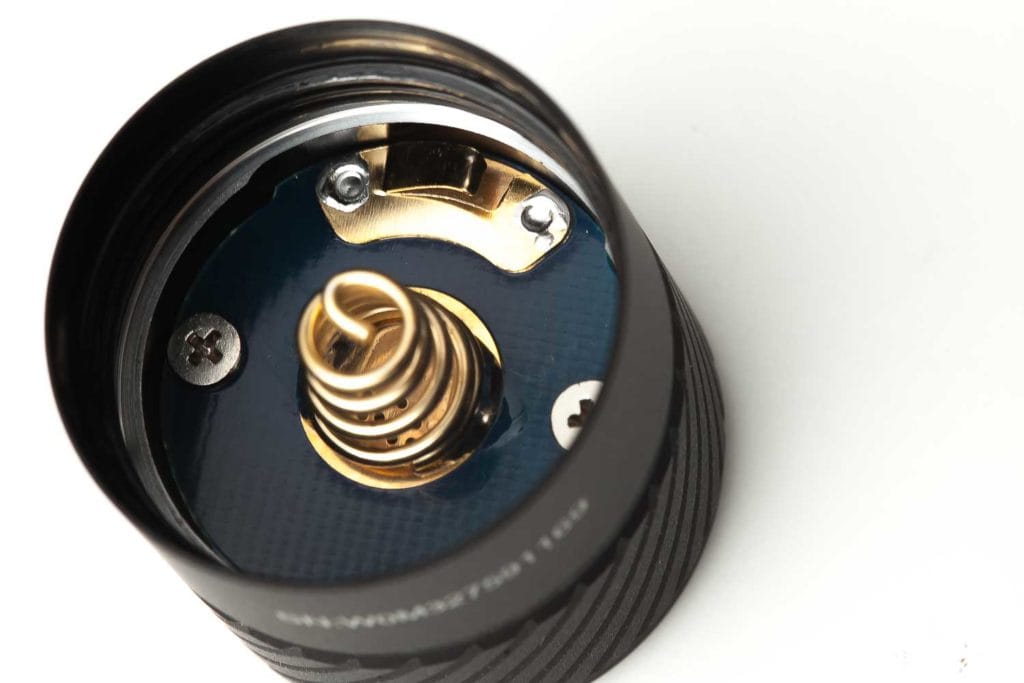
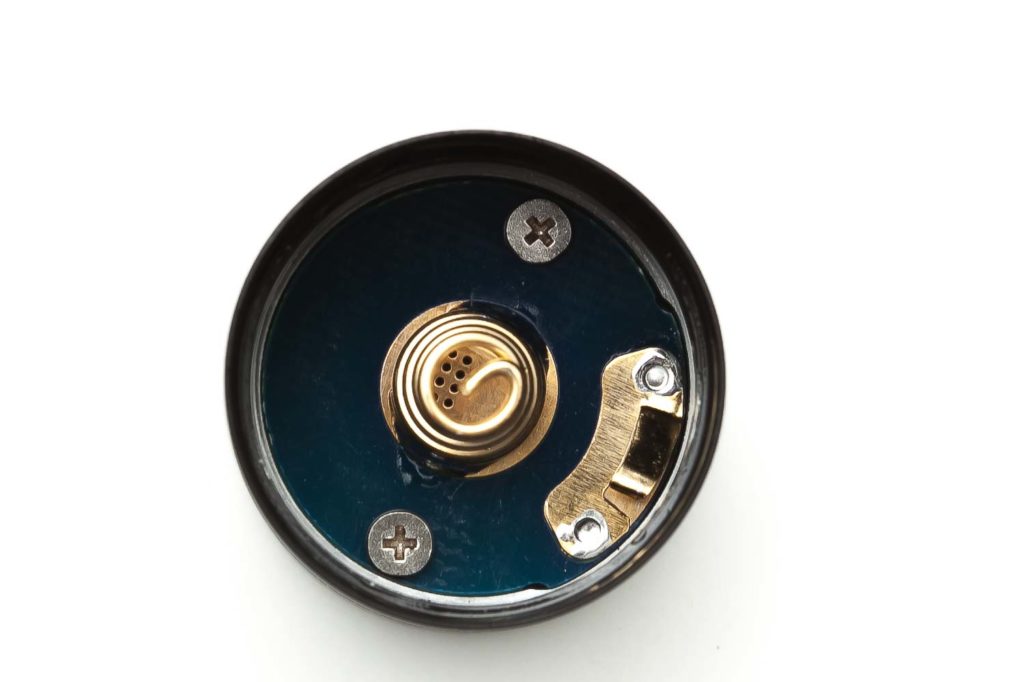
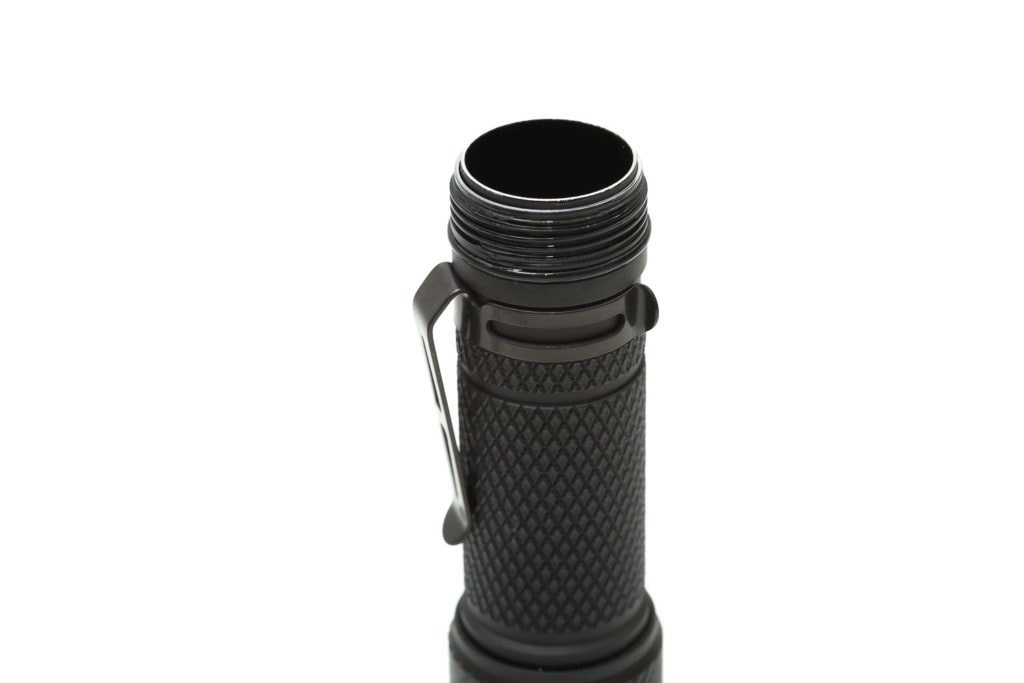
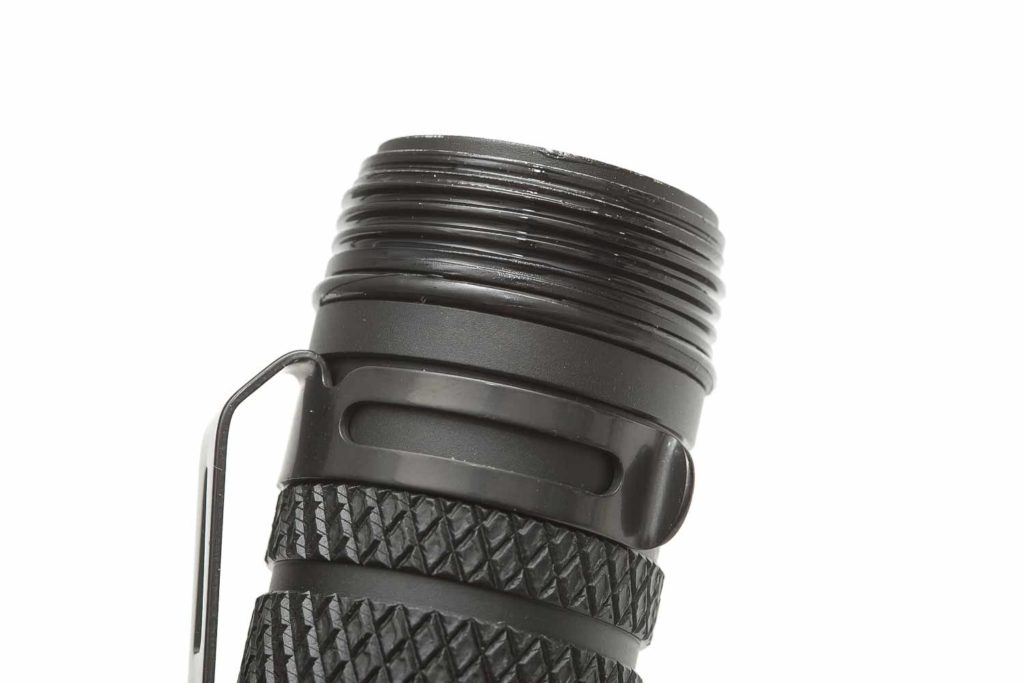
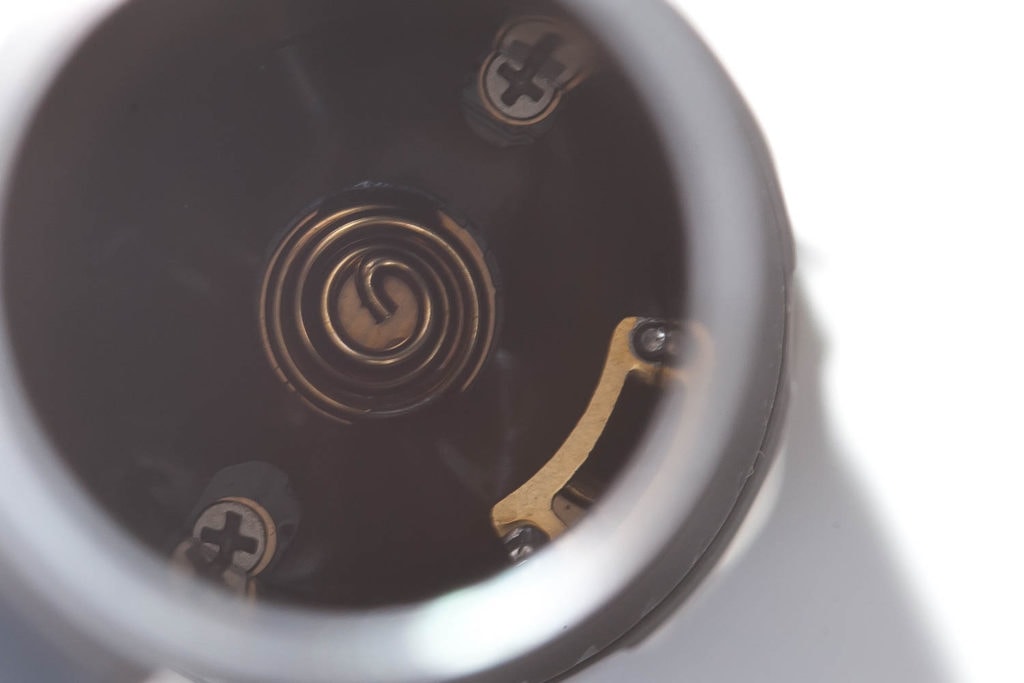

LEP, Lens, Bezel, and Reflector
I already talked about the aggressive stainless steel bezel. I wish they included a second, flat bezel without the spikes. I would still recommend using this bezel when out in the dark since it does protect the thread and lens of the flashlight.
9 out of 10 LEP flashlights are glued to keep curious eyes out. The W10 v2 is no exception in that regard. The battery tube is glued to the head and the bezel is also glued to the head.
The front lens has a dome shape, unlike some other LEP flashlights that have a flat front lens. This means that the front lens is part of the focusing system inside the light.
Information on the Laser Warning paper inside the package tells the following:
- Max. output power < 1 milliwatt
- Wavelength: 400-700 nanometer (visible light)
- Min. divergence: 0.5 milliradian
- Output: Continuous (CW)
- Laser hazard classification: Class 2
The website of Acebeam tell the laser is actually classified as a Class 2M laser.
Although it’s named a ‘white laser flashlight’, there is no white laser inside. It uses a blue laser that’s pointed onto phosphor that changes the blue laser color into a yellow/whitish beam. None of the LEP flashlights I own have a pure white beam. They are all more yellowish than white. The beam itself is really narrow, but not like a laser pointer. And of course, you can use the colored filters to turn your flashlight into a red or green hunting light.

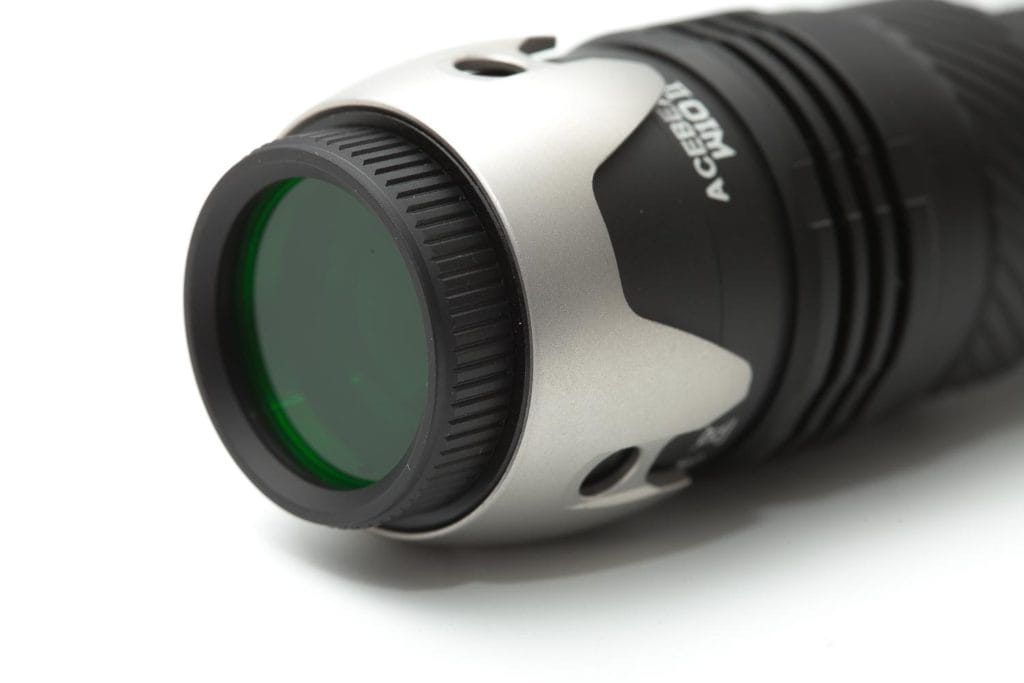
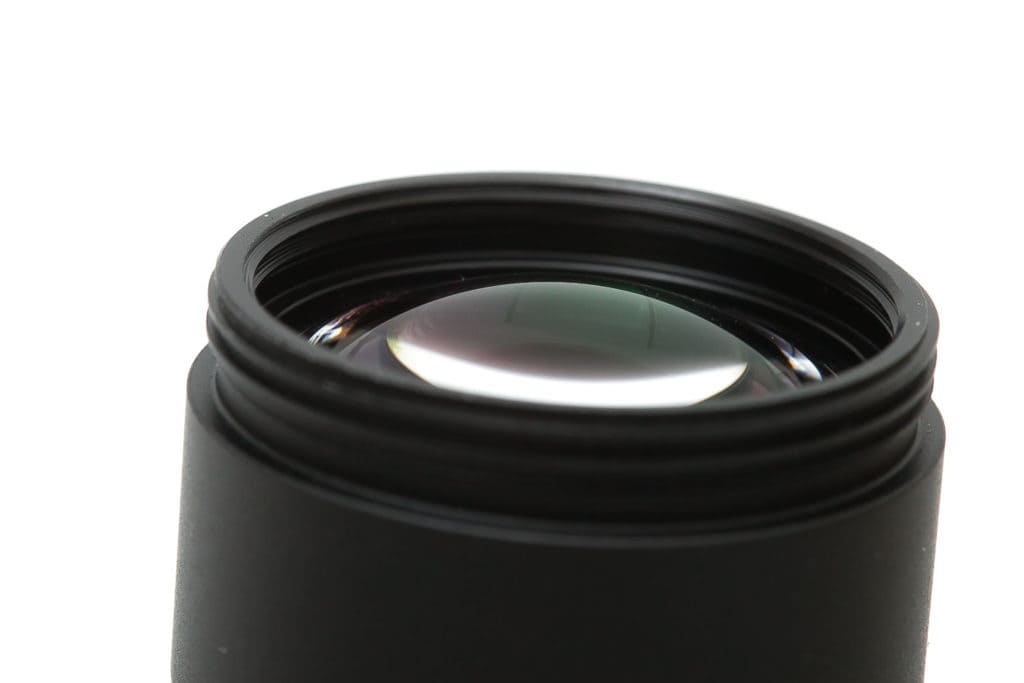
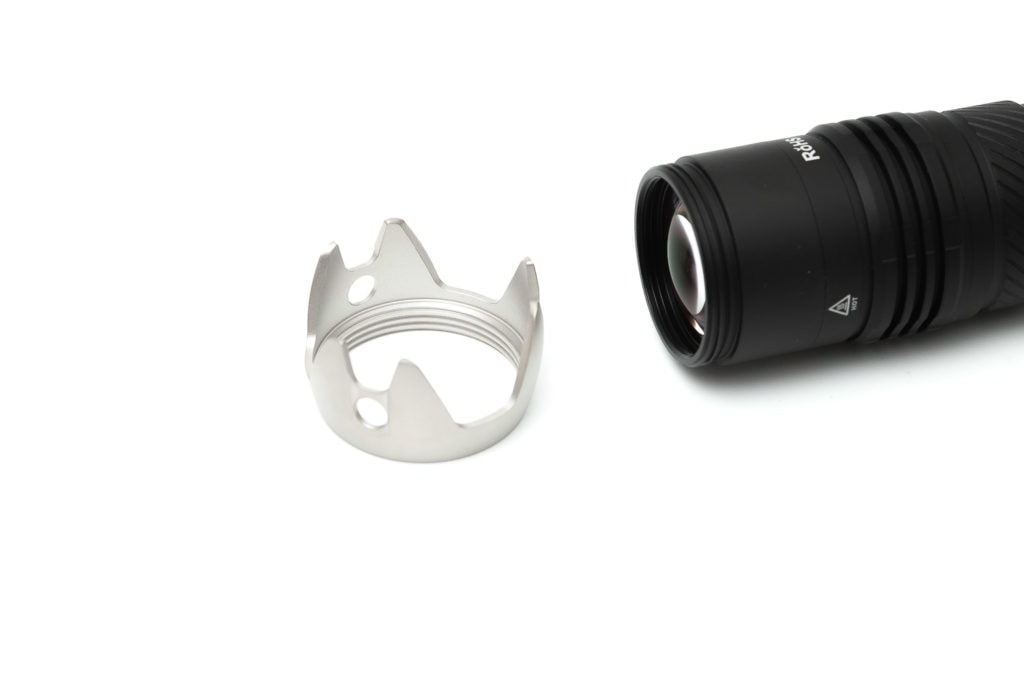
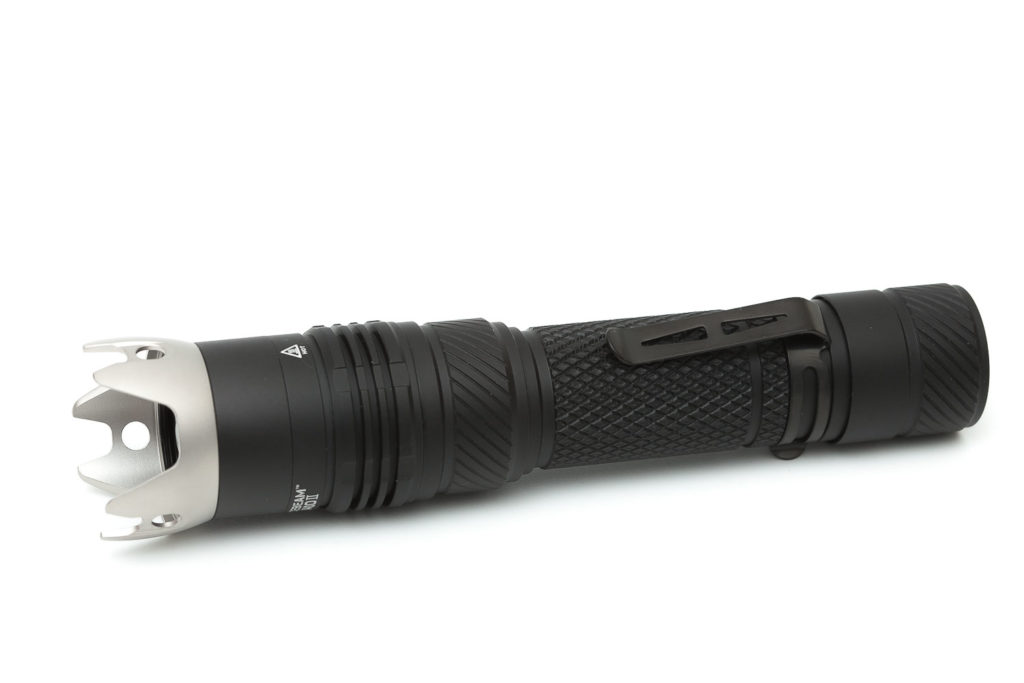
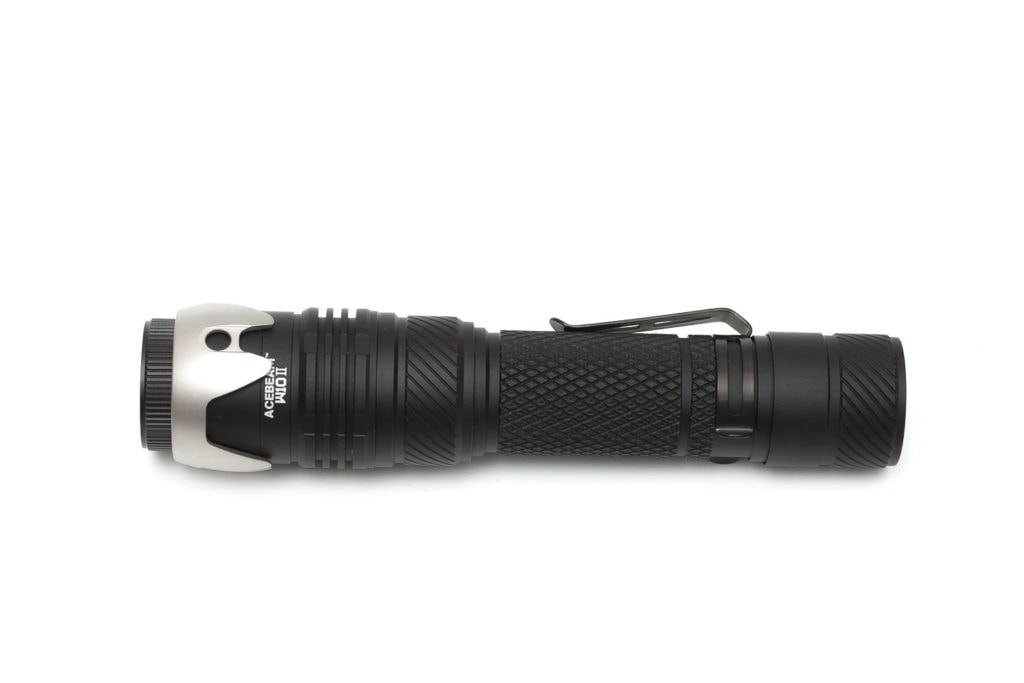
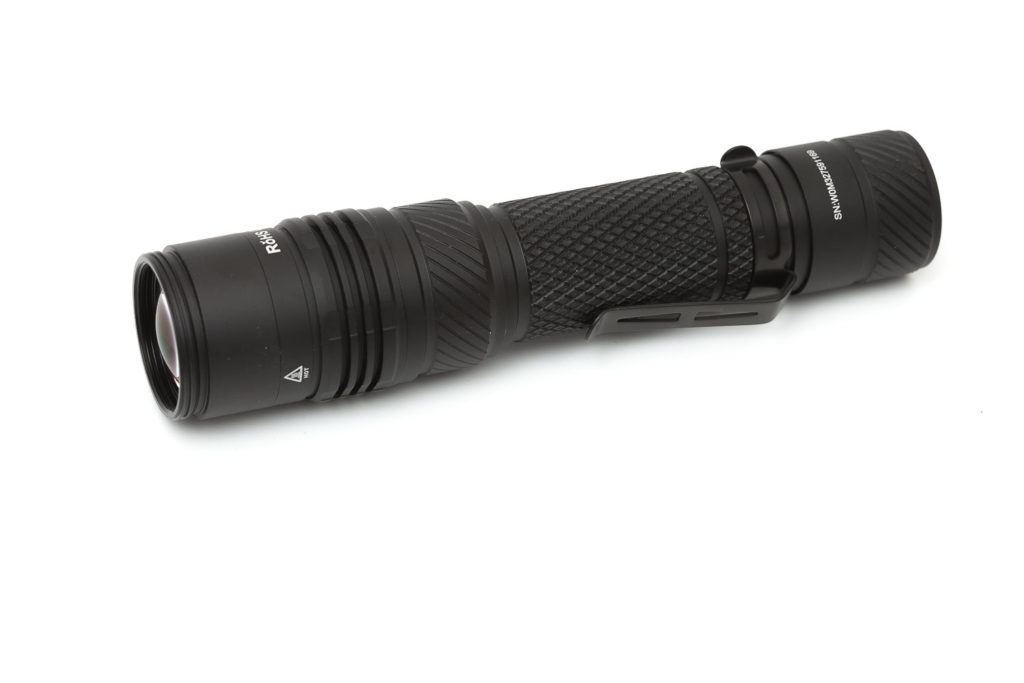
Dimensions:
- Length: 147.5 mm ( 5.8 ”)
- Head diameter widest: 33 mm ( 1.3”)
- Body diameter: 25.67 mm ( 1”)
Weight:
- Empty: 133.3 g ( 4.7 oz)
- With battery: 206.3 g ( 7.28 oz)
LEP flashlight comparison
Size compared to other LEP flashlights
From left to right: Acebeam W30, Weltool W4, Jetbeam RRT M1X raptor, Jetbeam M1X WP-RX, No-brand 26650 LEP, Nextorch T10L, Jetbeam RRT M2S, Jetbeam M2S WP-RX, Weltool W3 PRO, Fenix TK30, Nextorch T7L, Acebeam W10 gen2.
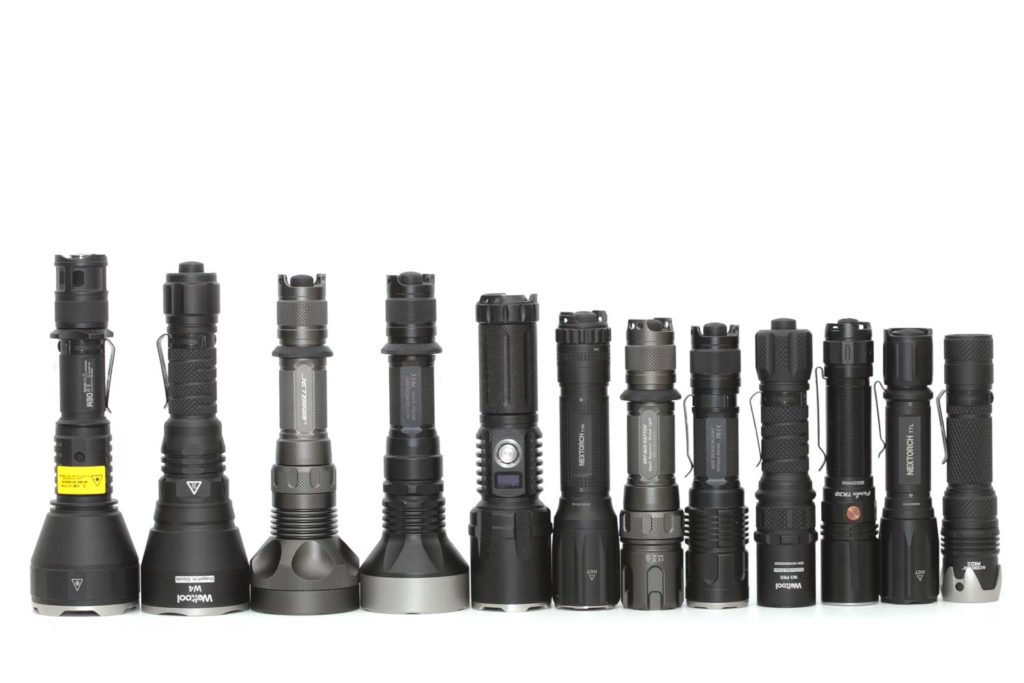
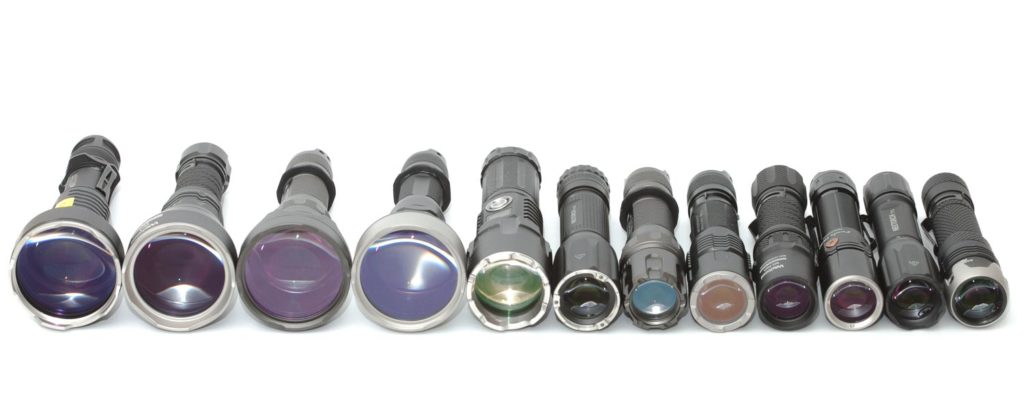
Driver & User Interface:
Warning: there are actually 2 types of the 2nd generation Acebeam W10. Not just a generation 1 and 2, but 2 versions of the second generation. The older version had a mechanical switch and no strobe. The new version of the 2nd generation, that I’m reviewing, has strobe and no mechanical switch.
The Acebeam W10 gen 2 I’m reviewing has a simple user interface. Click for on and Click for off. It’s a single-mode flashlight with strobe function. And sometimes, I really appreciate these types of flashlights. Not just because it takes less time to review, lol, but it gives light when you push that switch.
Nor the Acebeam website, nor the official manual mentions a strobe mode, but mine has.
Available modes:
- On
- Strobe
From OFF:
- Single-click: On
- Double-click: Strobe
From ON:
- Single-click: Off
- Double click: Strobe
Mode memory:
- It has only 1 mode: On
- (Strobe is not memorized)
Blinky modes menu:
- Yes, a double click from ON and OFF activates Strobe mode.
Low battery warning:
- Not really, the output drops, and at a certain point the flashlight turns off. At that point, you can turn the flashlight back on.
Lock-out mode:
- Just unscrew the tailcap a bit
PWM:
- There is no PWM visible by eye.
Firmware / UI Conclusion:
Very simple UI. A single click for On, and a single click for Off.
Batteries and charging:
The Acebeam W10 v2 has a charge function built into it. Just below the head is a ring of redding (diagonal lines) that can be unscrewed to reveal the USB-C charge port.
You can use any time of USB charger, but the cable you receive with the light is a USB-A to USB-C cable. This is still the standard as of today. I don’t have any USB-C to USB-C charge option, so I can’t really comment on that.
The charge speed seems to be around 1.8-1.9 A per hour. The closer it gets to a fully charged state, the lower the charge current gets. Since the battery included is a 5100mAh battery, it will take about 3 hours to recharge the battery. There is a small indicator LED that is red during charge and green when finished charging. During the charge, the flashlight becomes warm, but not hot.
The battery is labeled as an Acebeam IMR21700NP-510A. It’s protected and has a little button top. Unfortunately, it’s too long for 99% of all battery chargers currently on the market. The W10 gen2 also accepts flat top, unprotected 21700s, without a problem.
It’s possible to use 18650 batteries as well, it’s best to use a high drain battery for that matter. Acebeam does include a 18650 battery adapter in the box.
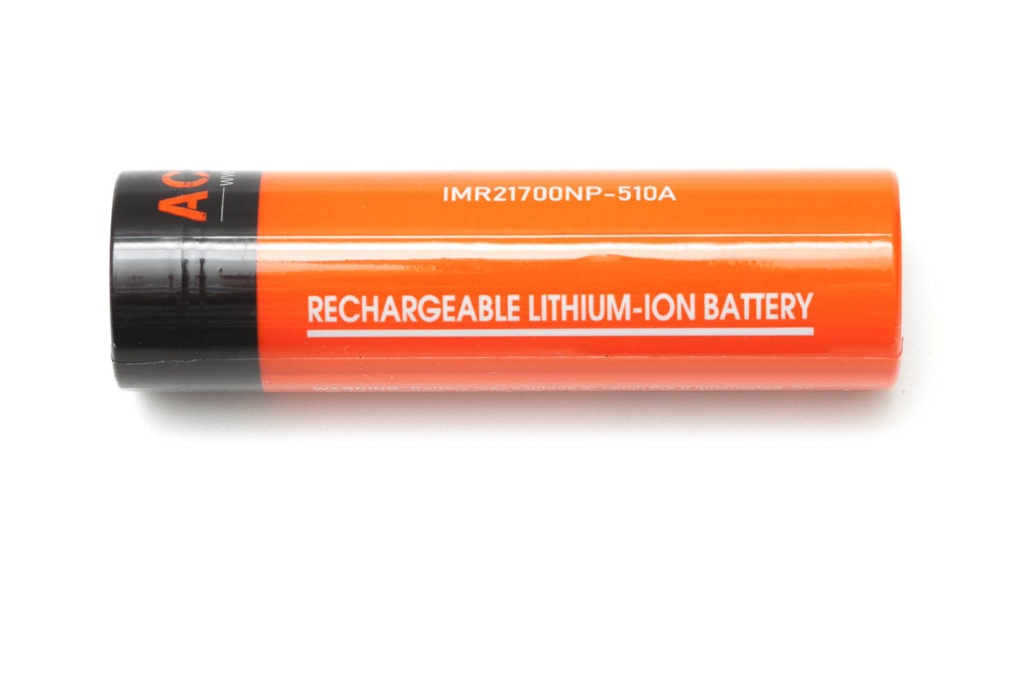
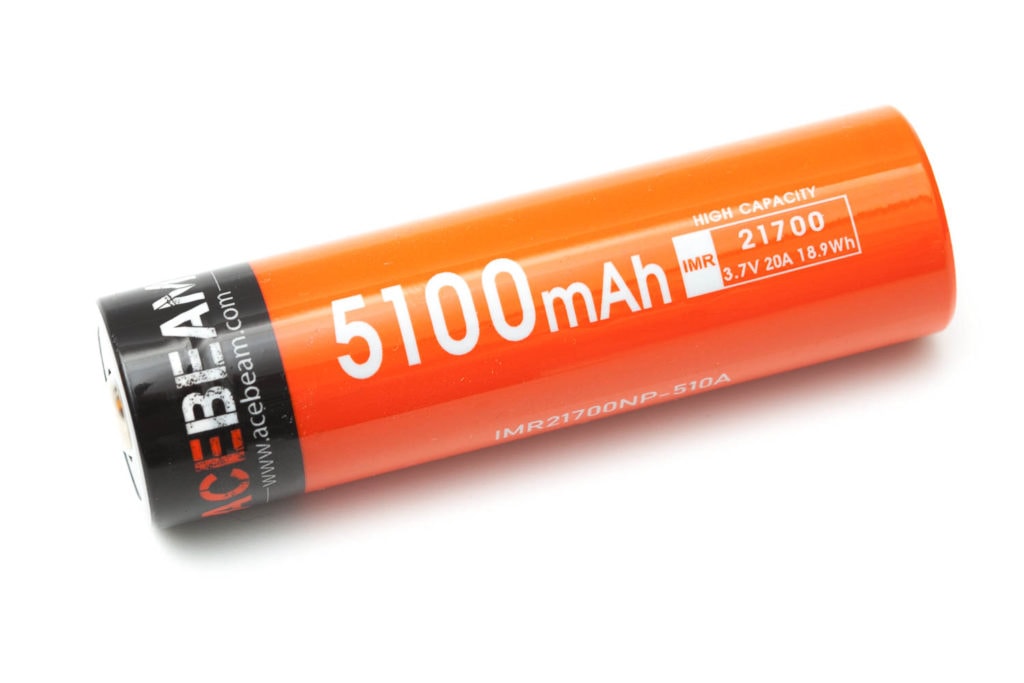
Performance:
Lumen measurements:
All output numbers are relative for my home-made Integrating Sphere. It is set up with an Extech SDL400 Lux Meter for measurements including a Kenko PRO1D ND-16 filter. The base measurement is done with a Convoy S2+ that has been tested at 255 lumens.
My readings were taken from a fully-charged Acebeam 21700 battery.
Edit: May 2023: I retested this flashlight since the initial testing was done a long time ago. And especially after my calibration light has been retested. Since there is only 1 mode, I called it High.
| Mode | Specs | 0 sec | 30 sec | 60sec | 90sec |
|---|---|---|---|---|---|
| High | 450lm | 493 lm | 469 lm | 461 lm | 454 lm |
As you can see, my copy of the Acebeam is actually overperforming in regards to lumens.
Runtime:
The runtime test was done with the 50cm integrating sphere, including the Kenko Pro1D ND-16 filter and Extech SDL400 data logging Lux Meter.
This is still the initial runtime test I performed in 2020.
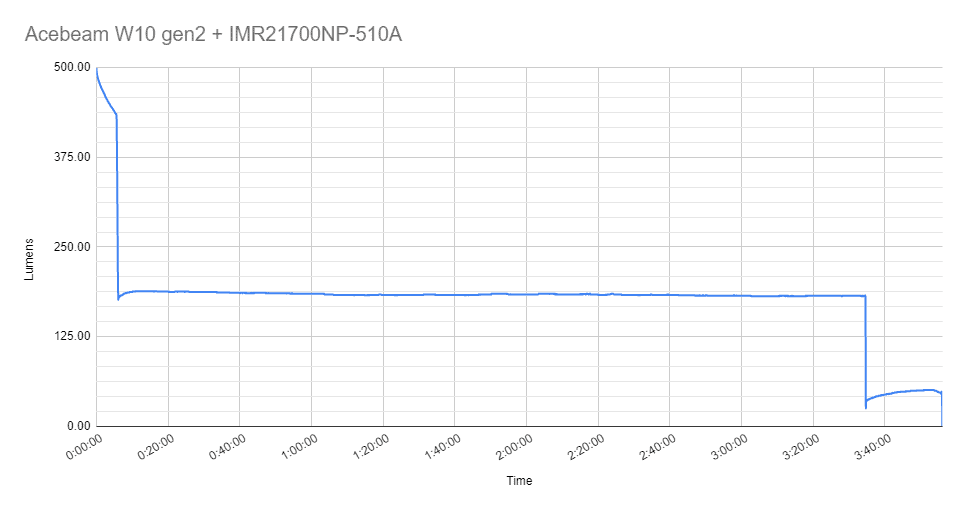
After dropping slowly to roughly 430 lumens in 5 minutes, it drops down to roughly 180 lumens. And continuous its runtime to 3 hours and 34 minutes before dropping down to roughly 50 lumens. It continued for 20 more minutes when it abruptly turns off. So you have 20 minutes to change batteries. After the light turns off you can turn it back on again for a few seconds before it turns itself off again.
According to the manufacturer’s specifications, the W10 gen2 is supposed to run for 3 hours and 30 minutes, and mine does that with ease.
Throw measurement:
Measurements were taken outdoors with a professional, calibrated Hagner E4-X Lux Meter.
Using the only mode it has:
- Outdoors (20m): 496,000 cd = 1409 meters / 1540 yards
Beamshots
For the following beamshots, I used a Canon EOS 5D Mk2 and a 100mm lens. manual settings: ISO1600, 0.5sec , F4, 5000K
The tower is about 450 meters / 492 yards away.
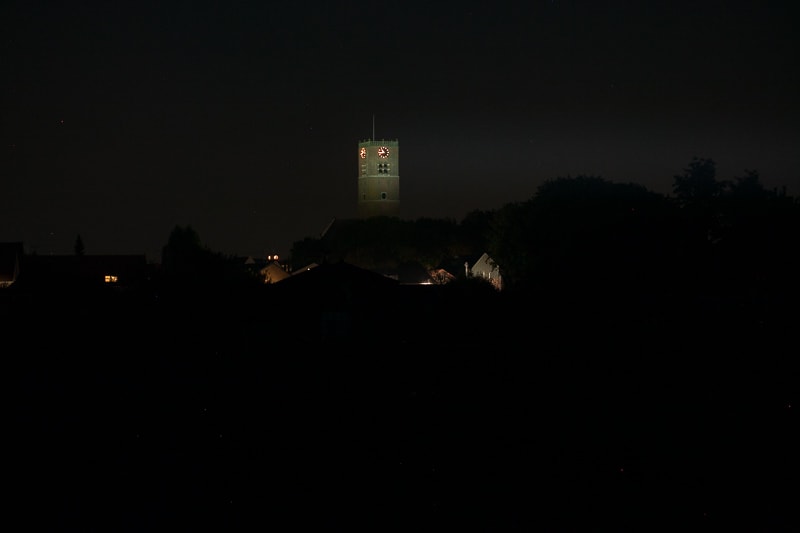
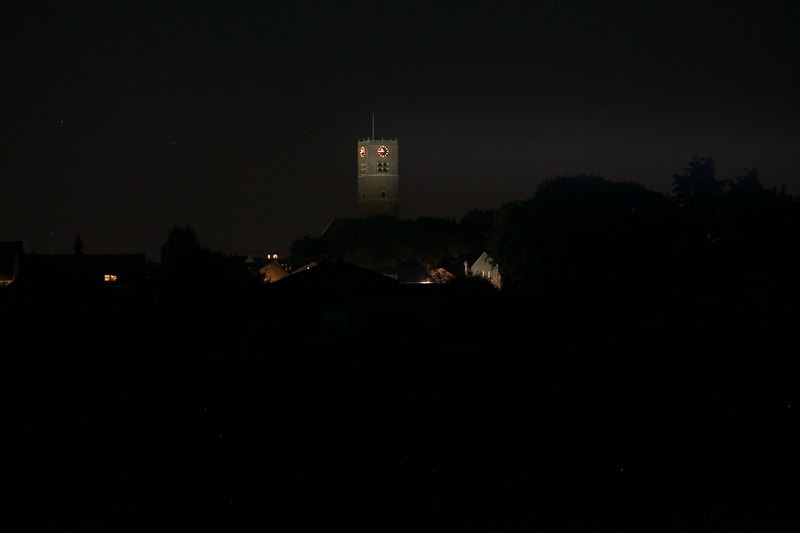

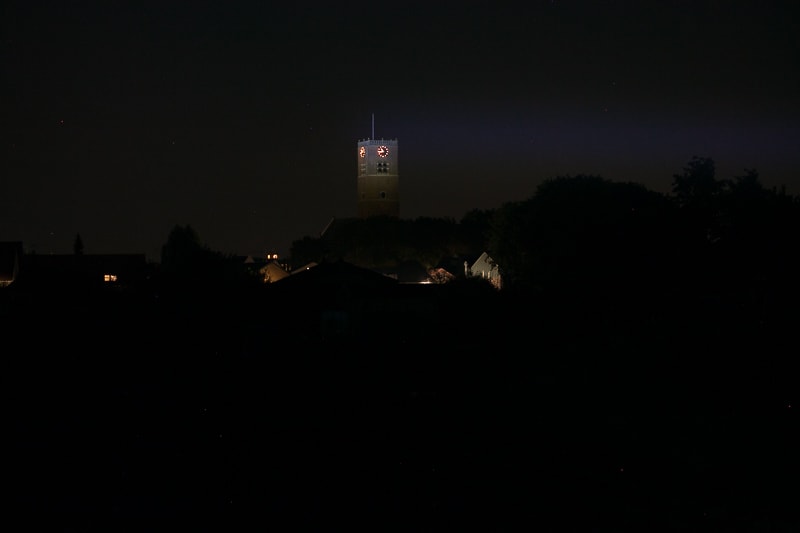
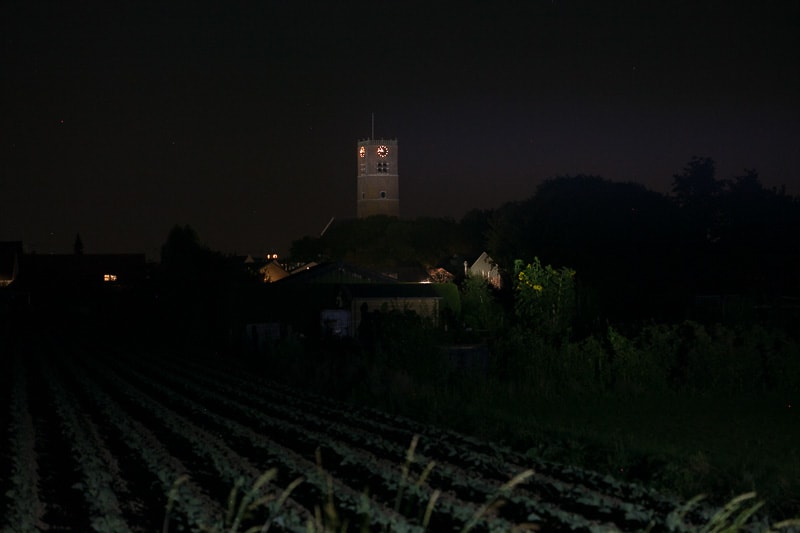
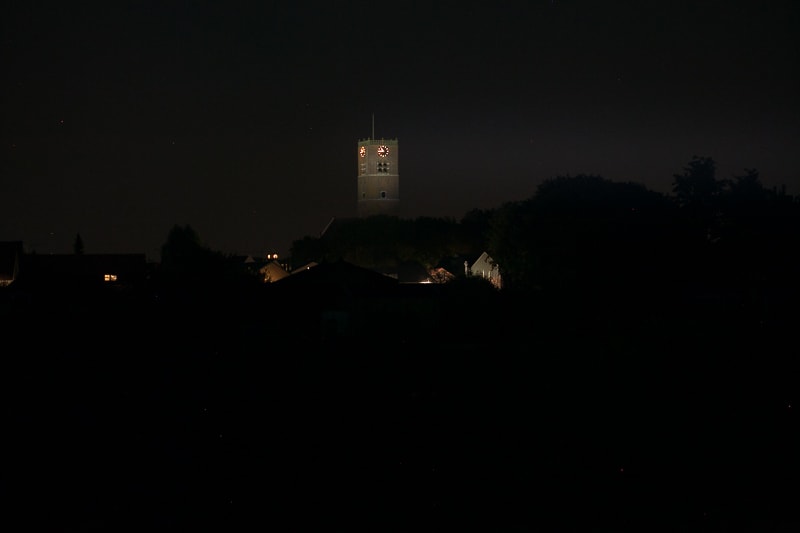
Disclaimer: This flashlight was bought from my own money. I have not been paid to review, nor have I been holding back on problems or defects.
Overall conclusion
Pros:
- Includes a high amp battery and colored filters
- Single-mode (this could be a con as well for some)
- Throws really far
- Smallest LEP flashlight currently available
Cons
- No lanyard or holster included in the package
- Only available with a spikey attack bezel
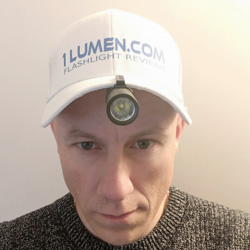
Rating: 5 stars ★★★★★
For many people, the first impression of a new product will influence the ‘value’ for that person. The W10 gen2 is doing a great job from the first impression (package) to opening the box with all the accessories, and up to the use of the flashlight. Performance-wise, there is nothing negative to be said about it. It actually overperforms from the manufacturer’s specs. It’s one of the smallest LEP flashlights on the market at the time of this review. It’s even shorter than the Nextorch T7L, which is a 18650 type LEP flashlight. The 2 colored filters are a nice extra, but I’m not going to use them. All in all, this is a really nice and high-quality flashlight that I can recommend to anyone who is looking for a pocketable thrower that can reach over a kilometer.
Acebeam W10 gen 2 for sale
The W10 gen2 seems to be discontinued. Instead, look at its competitors like the Weltool W3 PRO or Fenix HT30R. Or look at all the other LEP flashlights.
In 2023 we expect to review the successor of the W10 gen 2!
